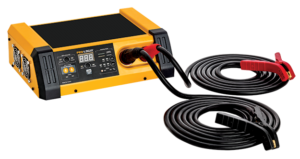Advanced Driver Assistance Systems (ADAS) deliver unprecedented levels of safety to vehicle operation, providing enhancements such as emergency braking, lane keeping assistance, blind spot alerts and more. ADAS-equipped vehicles are now hitting the aftermarket with critical mass, causing more and more shops to have to decide if they are going to service these systems and, if so, exactly how they will do so. Based on our interactions with shop owners and a reading of current aftermarket publications, it seems that many shops are still trying to figure this application out. We thought that we’d bring together several resources related to deploying an ADAS repair offering in the hopes of helping to shed light on this service option for our readership.
Preparing your Shop for ADAS

ADAS Roundtable Discussion
Although this podcast is a little dated (2019), 
Performing Static Calibrations

This article, by Dave Hobbs on VehicleServicePros.com, does a very thorough job of addressing the ins and outs of static calibration. He starts by noting that offering these services requires an investment: “First, the equipment is costly. Whether you opt for a collection of pure OEM tools (as used by the dealers) or a choice from a growing list of aftermarket providers, plan on spending tens of thousands of dollars if you desire to calibrate multiple vehicle brands.” He then compares this capital expenditure to major technology adoptions of the past to note that it is reasonable to expect a good return on your ADAS investment.
He goes on discuss the importance of getting it right, noting that close is not good enough when it comes to ADAS. “… thrust lines that are off or ADAS sensor calibrations that are 1 degree off equate the potential for up to a 1.5-meter lateral miscalculation at 100 meters of distance between your customers’ vehicle and another vehicle. The result might be a false ADAS intervention (vehicle braking/stopping for no reason) or worse yet, an accident.” He also notes how altering a vehicle’s ride height (lifting or lowering the vehicle) can have a significant impact on ADAS performance. Finally, he addresses how the various ADAS components work together, resulting in the need to often calibrate more than the affected part. “Because the two systems work together (sensor fusion) in several aspects of ADAS operation. Whenever circumstances merit calibrating one sensor, experienced techs recommend calibrating both the radar and camera sensor regardless of whether the OEM requires it.” This is a great ADAS primer and well worth the read.
BWM Lane Departure Calibration
With this article, by Andrew Markel on import-car.com,
He then lays out the calibration procedure, noting the factors that must be kept in mind. He points out the component replacements that require a recalibration: “Any replacement of the camera or windscreen requires a calibration of the system because the position of the camera and the system sensor may have changed. No calibration is required if the control unit is replaced.” This article provides a good sense of a typical calibration process and gives a feel for what shops can expect when tackling these service applications.
Can Weather Impact ADAS Function?

The decision to offer ADAS repair and recalibration services in your shop is a big one. It involves many decisions related to how such service will co-exist with your current service offering, what specific equipment you will invest in to perform these tasks and how you will train your team to perform the applications involved. We hope that these resources are helpful in your evaluation and adoption process.
The decision on what equipment to use to support your ADAS recalibration procedures is much easier. PRO-LOGIX battery chargers provide clean power supply mode function to deliver an optimal electrical environment for ADAS recalibration. A clean power supply is essential for this service, since most recalibration routines are done with the vehicle’s key in the ON position. With PRO-LOGIX, you can rest assured that your power deliver is exceptionally stable (<60mV ripple) and that our Rapid Load Response technology will quickly react to changes in load demand to keep the system stable, avoiding dips in voltage or electrical spikes.







